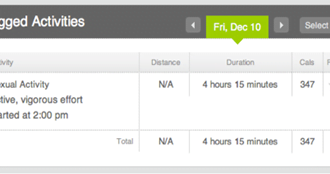Accuracy in medication labeling has never been more critical. Writing in StatNews, Joel G. Breman, MD, a retired National Institutes of Health (NIH) senior scientist, warns patients about a host of dangers that face them should they buy medications online. According to the World Health Organization, he says, 10 percent of all medications that come from developing countries are counterfeit.
- Counterfeit as in not having a single molecule of the medication in the pill.
- Counterfeit as in having substandard doses.
- Counterfeit as in having unsafe ingredients.
Are US Residents Safe? Not if They Buy Medication Online Think you’re immune because you live in the US? Think again. If you’re one of the many Americans who buy medications online, Breman says, you’re vulnerable. These online pharmacies often buy medications from offshore manufacturers, sometimes from the same developing countries the WHO cites in its study.
Blockchain-Enabled Medication Labels a Potential Solution
There is a solution. It starts with accurate medication labels – and a little help from some high-tech software called blockchain. Although it’s still in its pilot phase among several top American pharmacies and drug manufacturers, blockchain’s use in medication labeling looks promising. Blockchain allows every participant along a medication’s supply chain to record every event in the medication’s manufacture, sale, transportation, distribution, and retail sale on an unalterable, timestamped, and encrypted record. Thanks to a high level of encryption and limited access, blockchain is the most secure and accurate method to keep track of everything from ingredients to storage temperature to even possible tampering along the way. To be ready for blockchain’s full-scale US rollout, US drug manufacturers and retailers must shift to scannable medication labels whose material and print can handle extremes in temperature, moisture, and harsh cleaning and sanitizing chemicals. Barcodes or QR codes for medications also must follow one of the Federal Drug Administration (FDA)’s accredited agencies’ formats: GS1, HIBCC, or ICCBBA. These agencies each have a unique device identifier (UDI) format that helps people along the supply chain trace each step. Tracing Every Step on a Medication’s Supply Chain on a Single Label As blockchain comes into the picture across the country, look for the emergence of a digital hash inside the product’s code. The hash is an embedded string of updatable information that manufacturers can place into a QR code. That way, at each step along the supply chain, participants can verify that the product hasn’t been subject to tampering and validate the product’s authenticity. Patients and Providers Will Be Able to Verify with a Single Swipe When blockchain goes mainstream in medical device and medication labeling, patients can even scan codes on their pill bottles and devices to make sure that they are genuine. Busy healthcare workers, especially in large urgent clinics and hospitals, can double-check IV infusions, blood transfusions, and other items with just a swipe, to make sure that the product hasn’t been tampered with and is the exact item the provider ordered. Blockchain-Enabled Labels Have Huge Potential Industry-Wide Not only can this cutting-edge technology work well for tracing medications, but it has incredible potential for other labeling applications throughout the industry. Labels also play a wealth of supporting roles within the healthcare industry. Labels appear on lab orders, patients’ wristbands, medication interaction and allergy alerts, and other critical means of communication. As blockchain makes its way into the healthcare industry, these labels, too, might become blockchain-enabled, combining with electronic health records to provide patients and providers with a seamless medical record. With corporate giants like Merck and Wal-Mart putting blockchain labels to the test, the future of blockchain-enabled labels in the medical field looks bright. Not only do blockchain-enabled labels offer great promise for the medical industry proper but they also might hold the key to solving the problem of consistency and safety in nutritional supplements.
No FDA-Required Testing for Ingredients on Vitamin Labels
The FDA doesn’t test the ingredients in nutritional supplements. Just because a vitamin label says it contains a given ingredient in a certain percentage, that label might not be accurate. Although the FDA requires dietary supplement manufacturers to list the ingredients, its requirement lacks the teeth to become a regulatory tiger. Several third-party groups, including ConsumerLab.com, NSF International, UL (yes, the same one that tests electrical wires), and US Pharmacopeia, have begun testing these popular products. What consumers need to know, Loria says, is that the FDA doesn’t even check for contaminants, such as pesticides, bacteria, or heavy metals, let alone the actual ingredients on the supplement label. It’s essential, therefore, that manufacturers not only submit their products to one of these organizations for testing, but also place the testing organization’s name and logo on the label itself. That way, consumers can have the assurance that the supplements contain exactly what the vitamin labels say they do. In addition, Loria points out, some manufacturers add the words “verified” or “approved” on products that haven’t undergone testing by these reputable agencies. Consumers need to beware and read labels carefully to make sure that any claims that the products are verified bear the name or logo of one of these four organizations. One breakthrough, however, is CVS’s new policy. As of May, the pharmacy chain announced an initiative to ensure that every supplement they offer has undergone third-party testing. Again, Blockchain-Enabled Labels Can Help Solve Supplement Irregularities Blockchain technology, of course, would provide a welcome accountability for the supplement industry as well. Reputable manufacturers would have access to an immutable record of each step in the manufacturing process, even to recording the exact amounts of each ingredient. With blockchain-enabled vitamin labels, there would be less chance that a batch or two of contaminated or low-potency supplements would slip through. Until blockchain technology makes its way into the mainstream supplement market, all manufacturers should test their products with reputable firms and feature the results on each supplement label.







